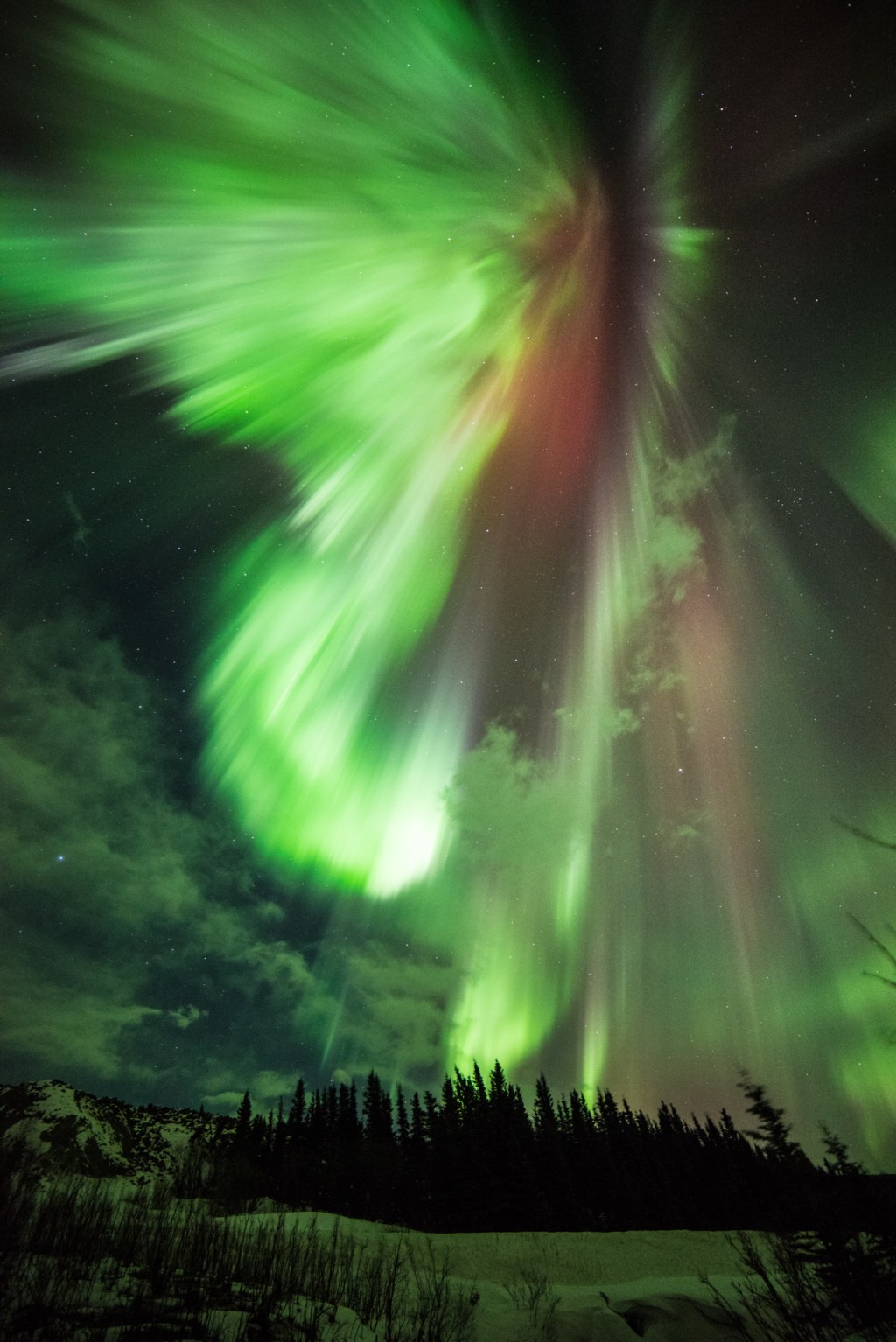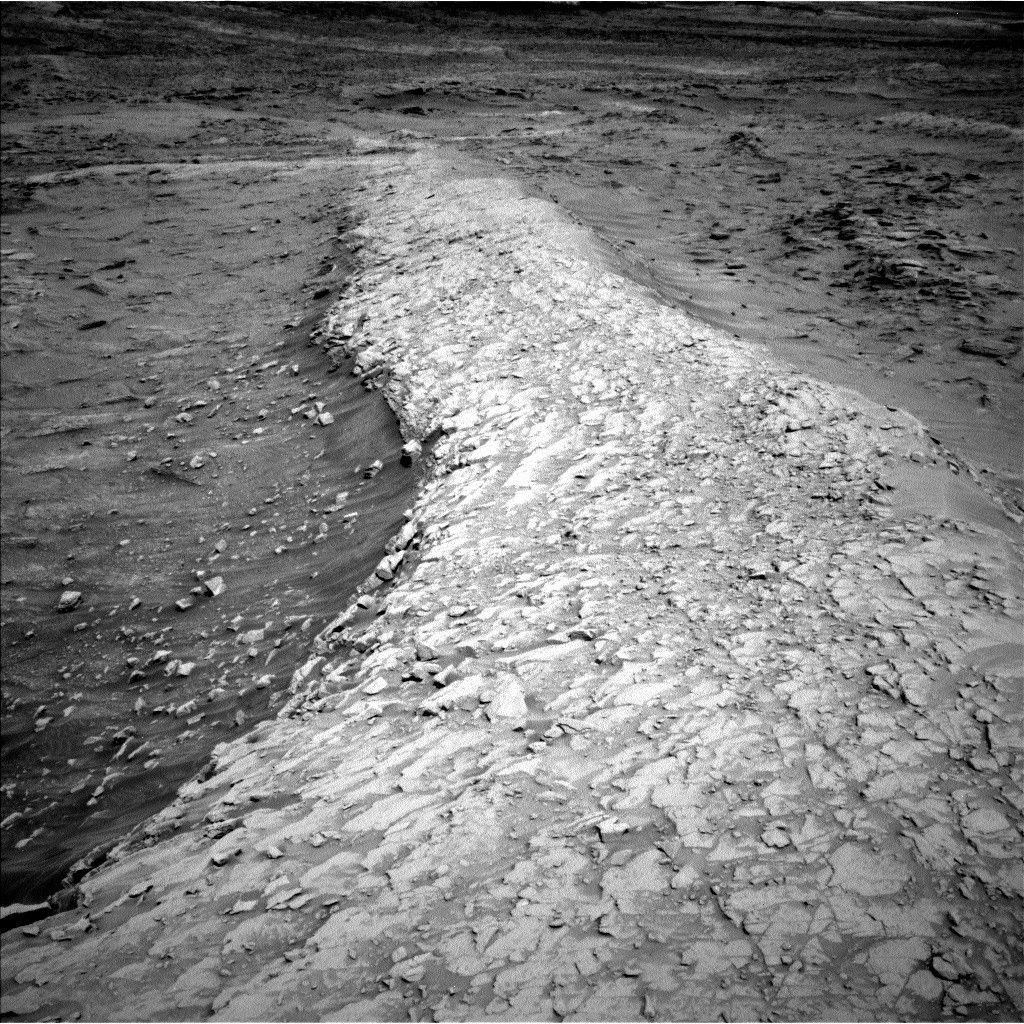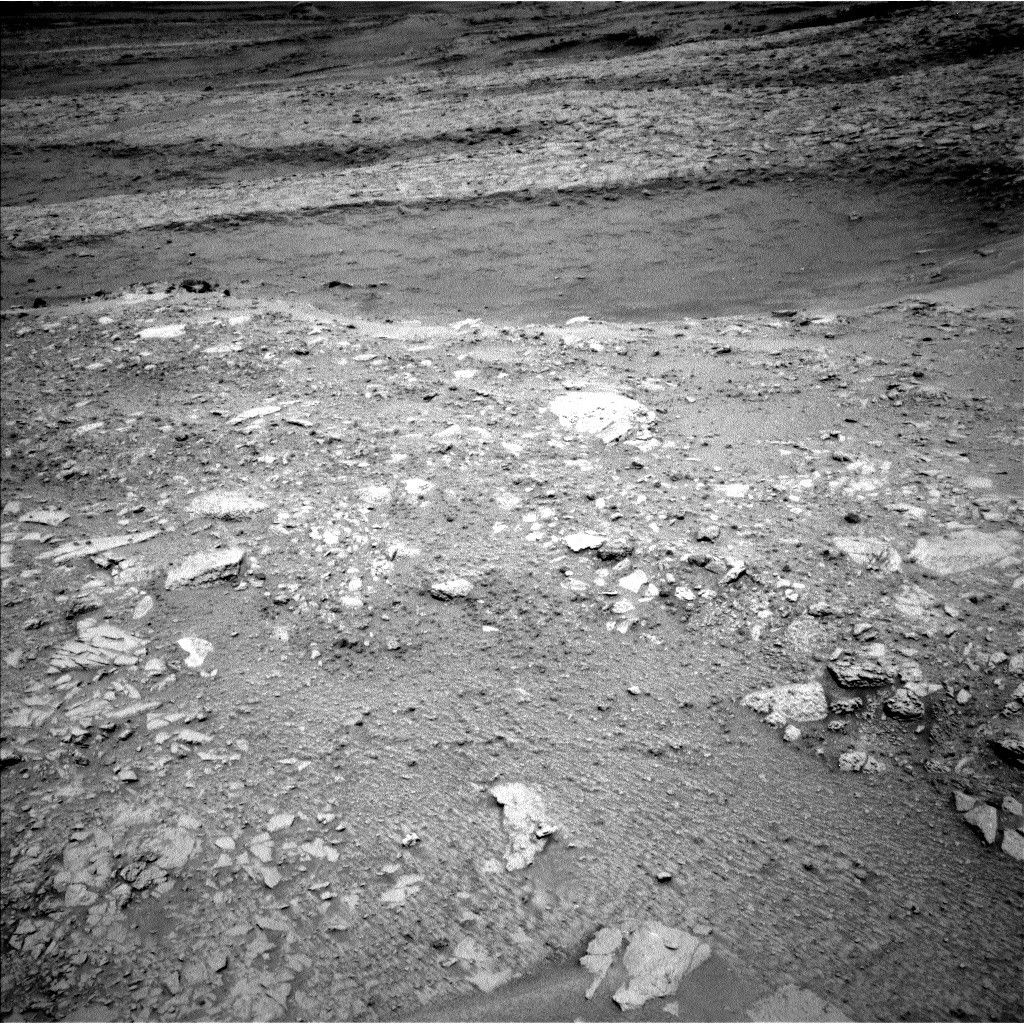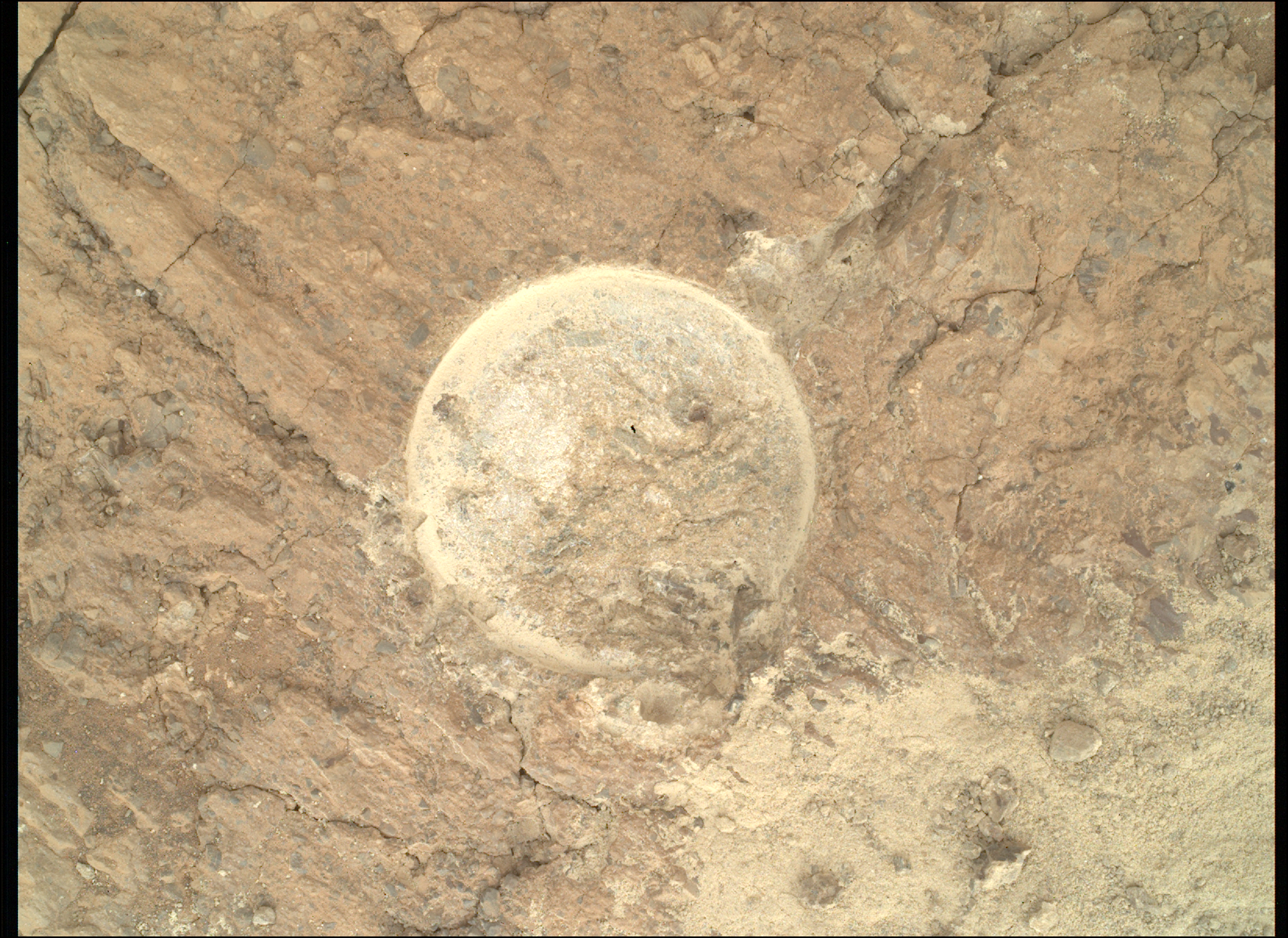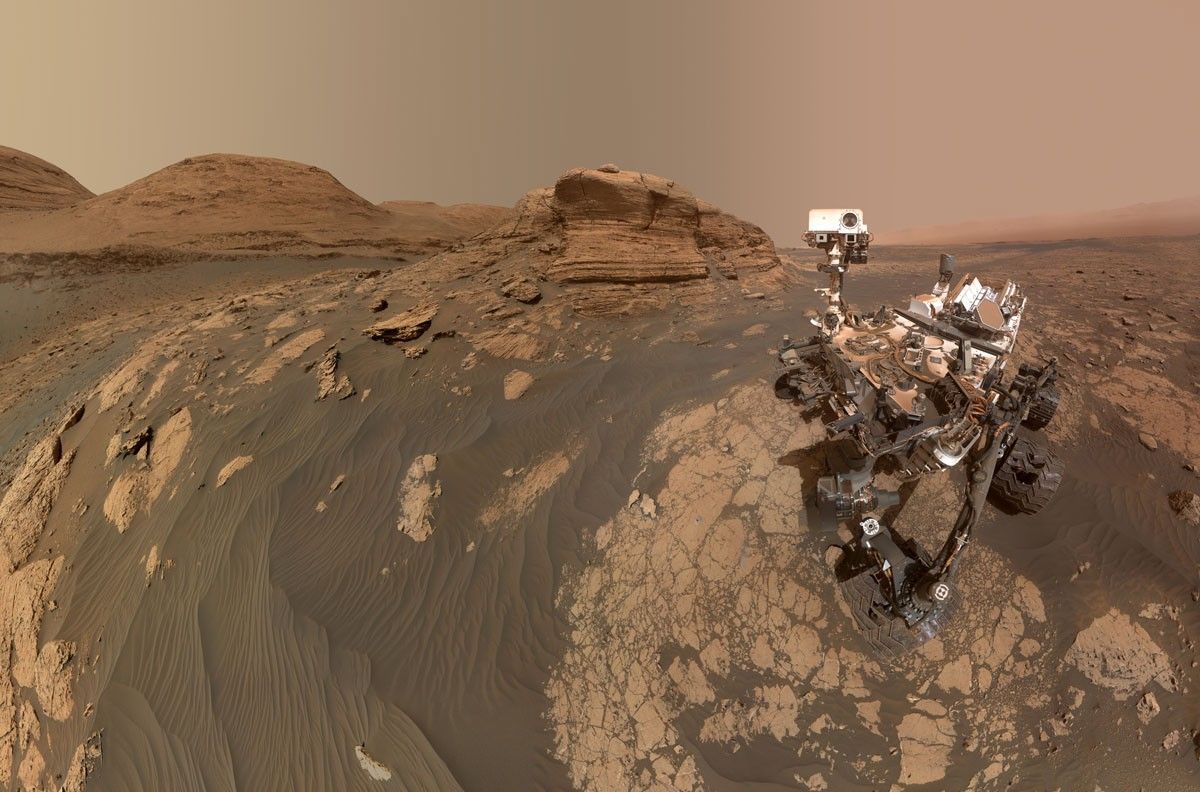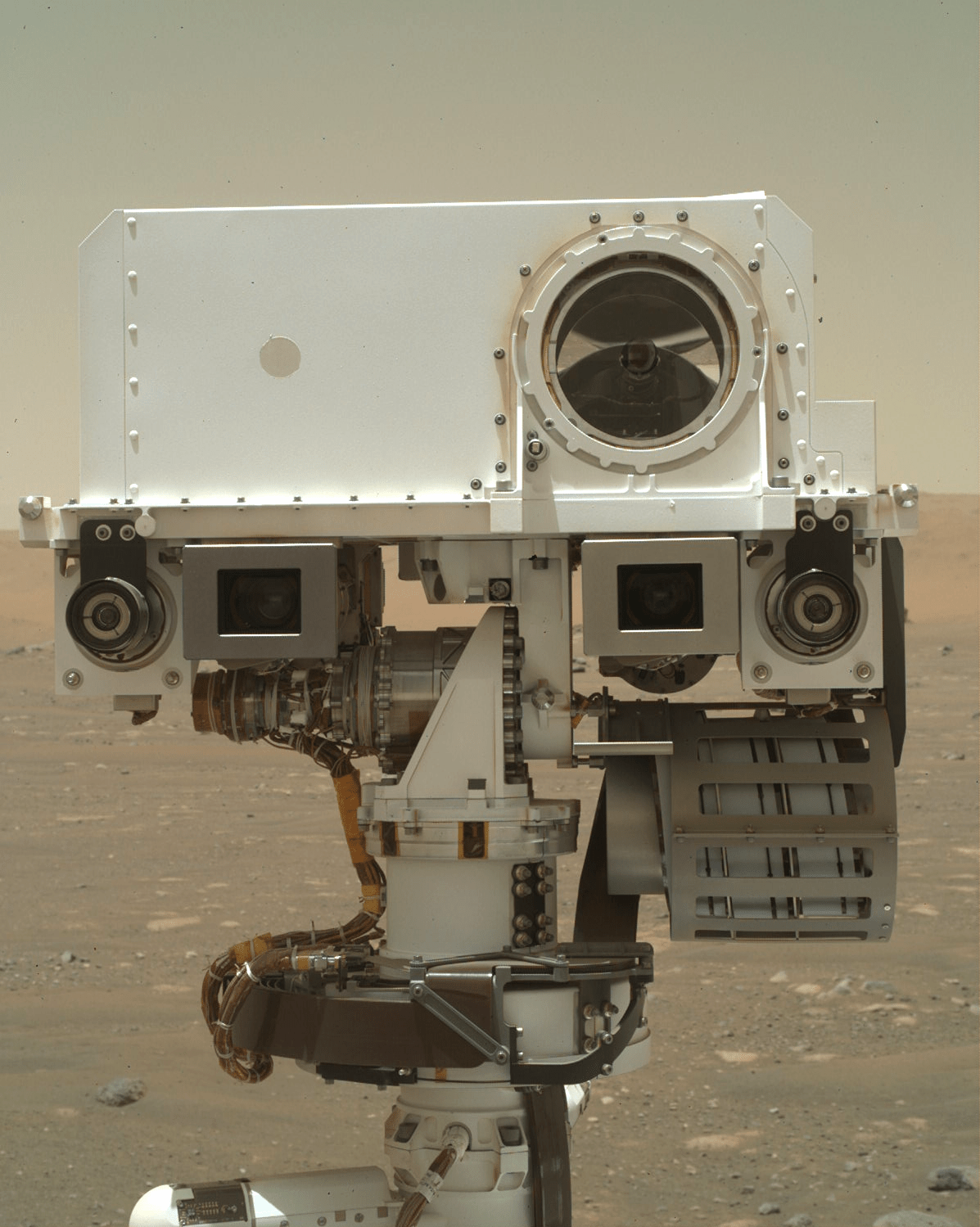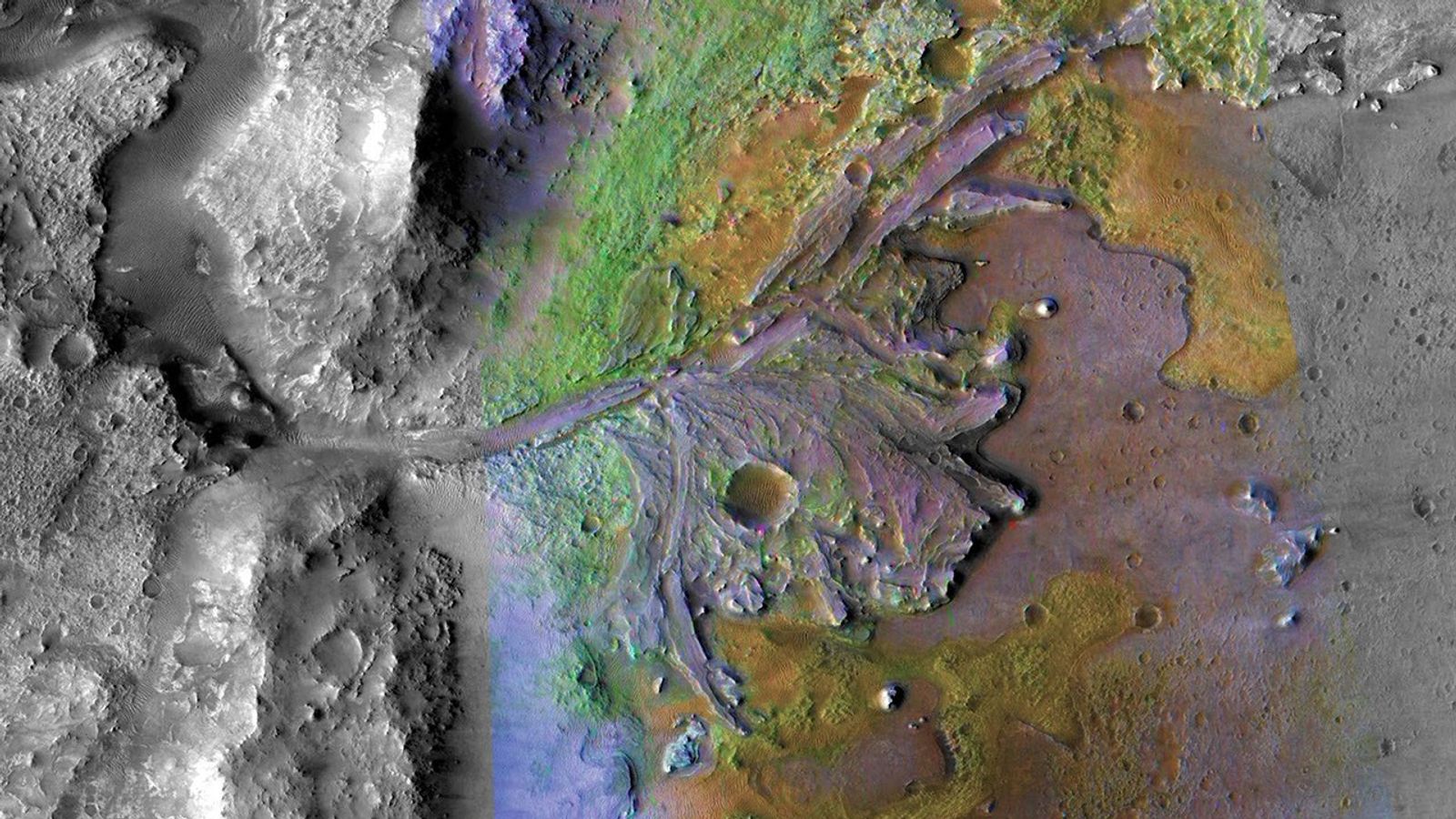As Curiosity continues to descend the Vera Rubin Ridge, the science team is doing their best to characterize, for a second time, all of the structural, chemical, and spectral variations originally seen as we climbed up the ridge. Yesterday's drive brought Curiosity from the "Pettegrove Point" member of the VRR into the "Blunts Point" member, which is just below the ridge itself. So, the team was planning to spend a full day at this location to perform remote science investigations, to brush off a rock surface, to analyze the surface's chemistry with the APXS instrument, and to take some high-resolution oblique images to characterize the layering observed in the sides of the rocks. When the team woke up this morning and first saw the workspace in front of the rover, everyone was happy and eager to get to work!
However, a stroke of bad luck prevented the science team from performing most of these analyses. About half-way through planning this work, the science team got news that the rover was not only sitting at a rather steep angle (~17 degrees relative to horizontal), but that one of the wheels was also propped up on a loose rock. In order to play it safe and to minimize any risk that the rover would lose its balance when the arm was extended to perform many of these analyses, the rover planners and the science team decided to forego any arm activities and, instead, plan only a short science investigation and to "bump" to a nearby rock to try again tomorrow for a full surface characterization. While these decisions are momentarily disappointing, they are relatively frequent and necessary to ensure that Curiosity will be able to perform her job many years into the future. We certainly don't want to take any unnecessary risks!
So, instead of the plethora of science activities originally planned for the day, Curiosity will instead only make a handful of measurements before pivoting and driving a few meters away to the next location for tomorrow's attempt at surface science. Today, Curiosity will use the ChemCam instrument's laser-induced breakdown spectrometer to measure "Grand Lake," a block of the Blunts Point member that appears to have the typical properties seen earlier in the mission, as well as "Mud Lake," which is a piece of bedrock broken by Curiosity's wheels that revealed a bright brick-red color on its inside (the sunken rock in the middle of the following Hazcam image, wedged between the raised rocks: https://go.nasa.gov/2KLEawF). Mastcam will follow up with documentation images as well as a multispectral image of Mud Lake to see what sort of spectral and mineralogical variations are the cause of the bright red coloration. Curiosity will also perform several environmental monitoring measurements, including a search for dust devils and an atmospheric opacity observation. Following her short drive, Curiosity will then perform standard post-drive imaging in order to get ready for tomorrow's day of surface analyses.
Written by Mark Salvatore, Planetary Geologist at University of Michigan



















